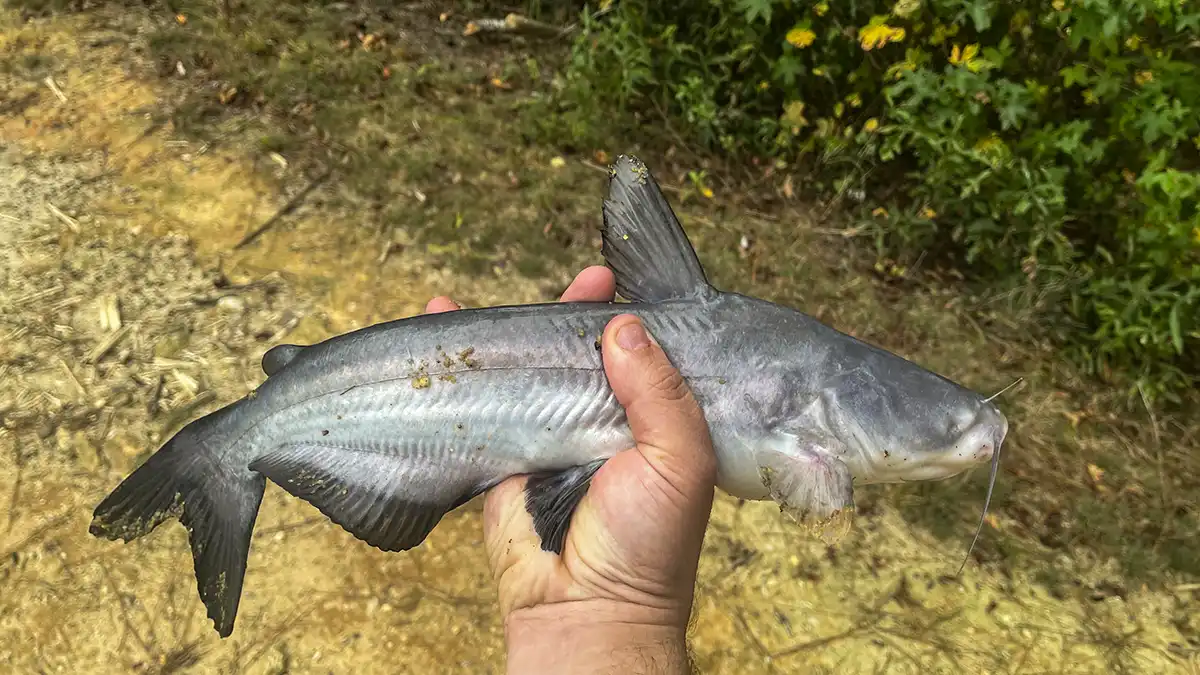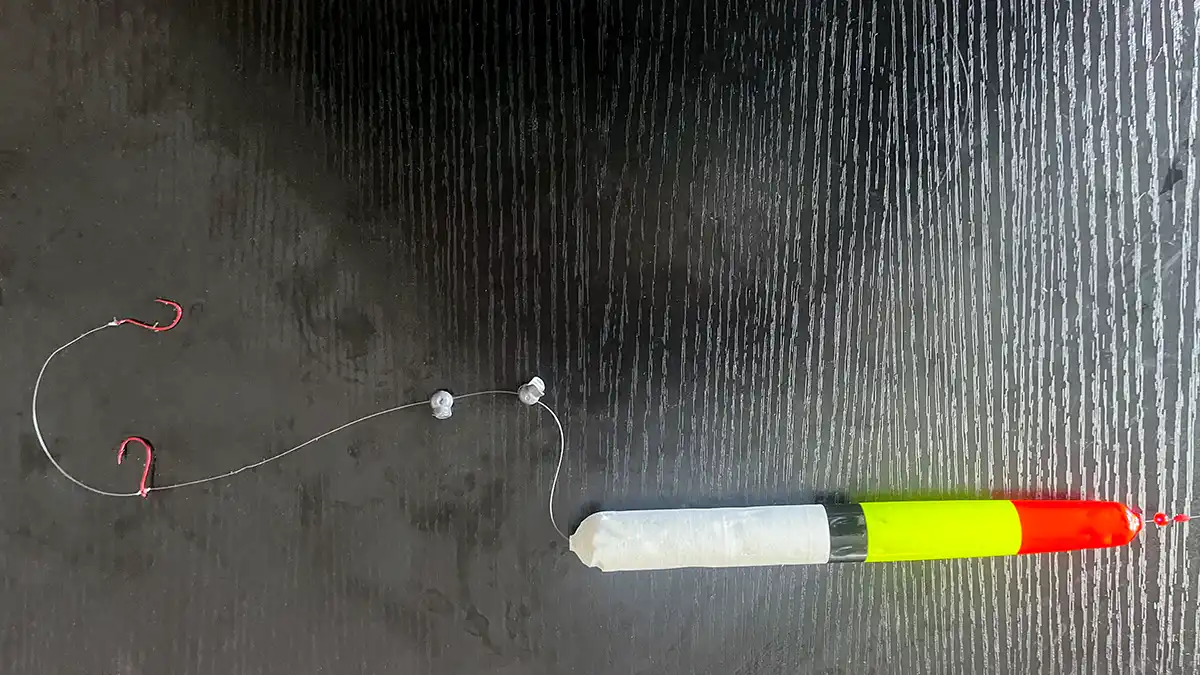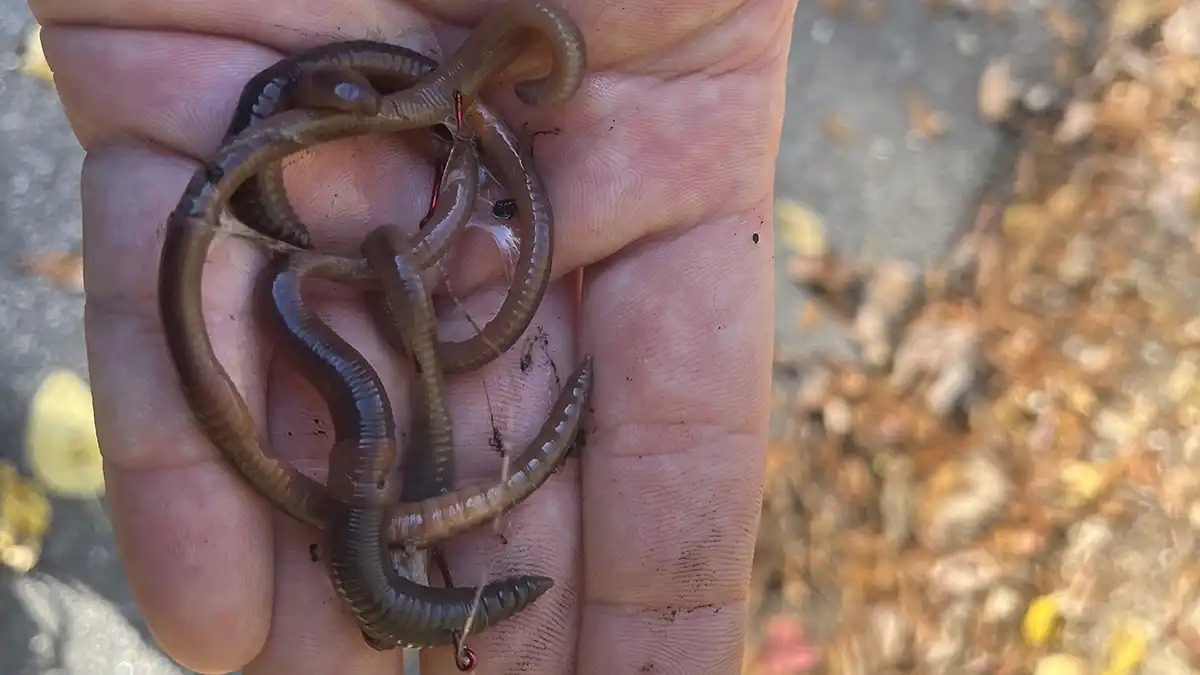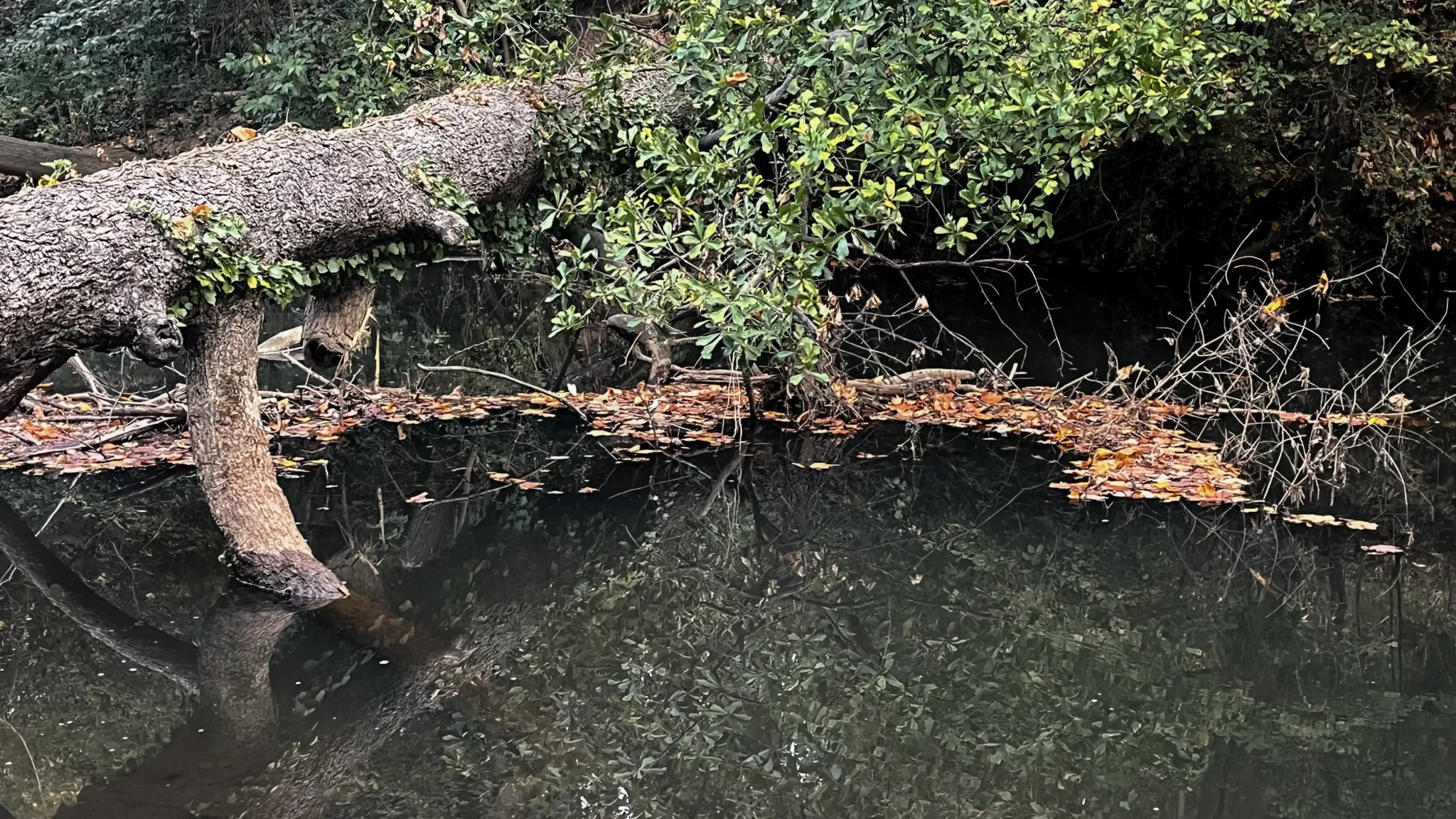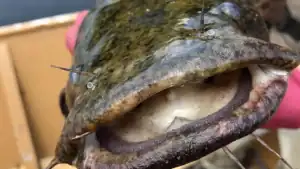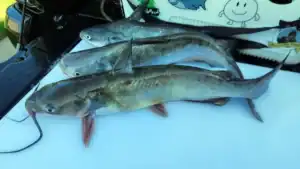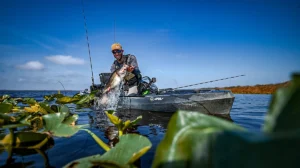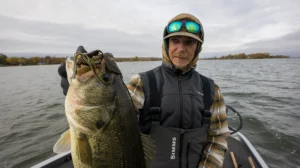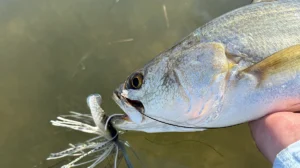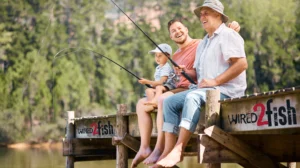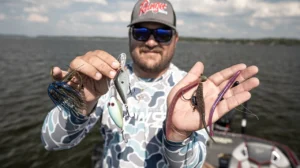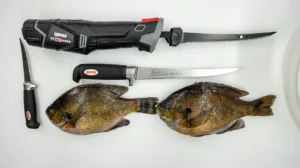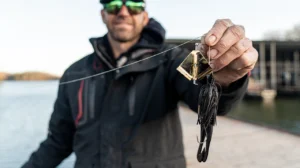It is rare that I purposefully pursue small fish. However, since moving to South Carolina, the absence of yellow perch and walleye has grown my fondness for eating catfish. As fall quickly shifts to winter, there is no better time to load up on large quantities of easily catchable catfish in small waters. I have a good system and these simple tips will help you catch river catfish easily in the colder waters for some tasty table fare.
The best part about eater-class catfish is that the gear can be very simple and does not need to break the bank. Additionally, the action is often fast and serves as a great way to get young people excited about the sport.
Most anglers I know prefer to eat catfish from the 1-pound to 5-pound range. As catfish grow, so does the amount of fat that can be found on them which creates a more fishy flavor. My personal rule of thumb is to keep the smallest catfish possible that are still relatively easy to clean. From experience, the meat will be firmer and more flavorful during cold water periods, especially true when eating catfish out of smaller lakes and rivers. And river channel catfish in cold water are some of the tastiest freshwater fish you can get.
FALL CATFISH GEAR
It is important to note that if bank fishing, gear often encounters its fair share of sand and dirt. I suggest using inexpensive gear that has the strength necessary if you happen to connect with larger-class fish. I prefer conventional casting gear for all catfish applications as I find star drags easier to adjust in the heat of battle than the common top-dial drag adjustment systems found in most modern spinning reels.
Conventional Catfish Combos
A great combo for any catfishing application is the Abu Garcia Ambassadeur S Combo. Comprised of an 8-foot, 6-inch medium heavy casting rod and a 6500 round casting reel, the combo easily handles the heavy terminal tackle that can be needed to maintain bottom contact. Additionally, the tip of the rod is sensitive enough to pick up subtle bites but has the backbone needed to maneuver fish out of heavy cover and fast current. Rods with sensitive tips are a must as smaller-size catfish often bite in short, quick sequences.
Spinning Catfish Combos
A long-standing favorite of most of my catfishing mentors is the Ugly Stik Tuff Spinning Combo. The price point can simply not be beaten, and the combo is truly filled with value. The oversized fighting knob comes in handy when wrestling big cats out of cover and the medium-heavy, two-piece rod is perfect for squeezing through the tightest of brush to the perfect piece of bank. Lastly, the reel is rated to handle 15-30 pound lines which will handle most small to above average size catfish.
SIMPLE CATFISH RIGS
Smaller catfish are notorious for making themselves known with a series of short quick bites. The entire body of catfish species is covered in taste receptors and their especially sensitive mouths are very good at working bait completely off the hook. When fishing for larger class catfish, a circle hook is suggested as it makes for a very safe catch and release operation. However, when in an area with a lot of smaller fish destined for the table, I have devised a two-hook system that is effective in catching short strikers. Drawing inspiration from the stinger hook systems walleye anglers commonly use when vertical jigging, this system has greatly improved my hook-up ratio and cut down on bait needed during an outing.
The top hook is attached via a standard drop shot knot with the bottom hook tied onto the tag end three to four inches below. In terms of hook selection, I prefer small lighter wire hooks. My long-standing favorite is a size No.4 or 6 Gamakatsu Octopus Hook. No matter the direction the fish engages the bait, a hook will be close by.
Carolina Rig
Composed of three simple ingredients, the Carolina rig is a catfishing staple. An easy way to subtly upgrade the classic rig is by adding a brass ticker and glass bead between the weight and barrel swivel. This simple addition creates a lot of fish-attracting noise while the rig falls to the bottom or shifts in the current.
Tip: The Top Brass Carolina Tickers and Beads Kit is a must to boost the appeal of your presentation
Float Rig
As I continue to learn more about catfish, they certainly are not sluggish bottom feeders but in fact, top-tier predators. Like all game fish, they can be found where the food is. A simple float rig allows an angler to get a sense of where the fish are located in the water column and helps easily pick off highly aggressive fish.
Tip: Tall floats are easier to spot than those that sit lower in the water, a good option is the Little Joe High Visibility Pole Float
BEST CATFISH BAITS FOR FALL EATERS
There is a never-ending list of natural, and commercially prepared catfish baits available to the modern catfish enthusiast. The more anglers you talk to, the longer the list grows. Admittedly, I have zero experience using commercially prepared dip and stink baits but am fully aware of the success they can lead to. An unfortunate instance of a stink bait tub left in a hot truck bed quickly ended any curiosities I had towards the subject.
As catfish get bigger they inevitably gravitate towards live baits or cut chunks of the main forage found in their body of water. Shad and herring become the norm in southern reservoirs and rivers while northern cat anglers favor suckers or river chubs.
When eaters are your quarry, two baits stand alone in my mind, night crawlers and chicken livers.
Nightcrawlers
The simplest presentation of all time is a ball of night crawlers. While they can be purchased at most convenience stores or bait shops I urge you to harvest them yourself. Local crawlers have a lot more scent and can grow to larger sizes than farmed ones. A shovel and a coffee can are all you need to secure bait for an outing.
Tip: The best part about fishing with night crawlers is that you can catch just about anything that swims, bass, walleye, trout, carp, or various panfish species are welcome additions to any fishing trip.
The two hook rig discussed above is a great way to spread out the crawlers to create a natural-looking presentation. The added bulk allows for more scent dispersal and the night crawlers will stay lively longer as they are hooked less and have more freedom to move.
Chicken Livers
I would bet that more catfish have been caught on chicken livers than by any other bait. They are available in the meat department of your local grocery store and are very inexpensive. The strong, metallic scent of chicken livers calls catfish in from long distances and is a great way to create a productive area. While chicken livers are widely available, fresh cow, turkey, or pig livers are also good options and can be easily secured by connecting with your local livestock farmer. Often, swinging by a farm near butchering time with a hot coffee and a doughnut will get you a season’s worth of bait.
Tip: Use long and slow casting mechanics to “lob cast” livers, hard casts will almost certainly result in lost bait.
The common complaint with chicken livers is that they are very hard to keep hooked as they easily rip and tear upon contact with the water or during the cast. Some folks create sacks with bait mesh or reinforce the hooked liver with elastic string. I don’t prefer that approach as I feel the added materials often end up being lost in the water. The key is to hook the liver the least amount of times possible which limits the possibility of tearing. Small light hooks have the give needed to allow for flexibility during the cast.
To properly rig chicken livers, a few basics need to be learned. The livers of most birds are composed of two deep red-colored lobes that are joined by a thicker cartilage at the center. The yellow stringier parts are simply fat and impossible to keep on the hook. Some livers are processed with the gallbladder still attached which looks like a small green ball. These hold an unbelievable amount of scent and should be utilized at all costs. With most standard-sized livers I prefer to choose one lobe to use at a time. On smaller livers, both lobes can be used at once.
Even when purposefully chasing smaller-size fish, I do not believe in necessarily downsizing presentation. Catfish have enormous mouths and even small fish can handle hefty baits. I strongly feel that scent is your best friend when chasing these fish in small areas, more bait on the hook means more scent will be in the water for cats to pick up on.
Tip: Large “strainer” snags often catch floating debris such as leaves and downed limbs which creates even more quality cover
BEST LOCATIONS FOR FALL CATFISH
In smaller river systems, finding catfish in the late fall can be very simple. The two ingredients are depth and cover, preferably wood. It’s important to understand that depth is extremely relative, what’s considered deep in a small creek is often very shallow in larger lakes or river systems. A good rule of thumb is to find the deepest water in a given area. Lastly, never assume a creek or stream is too small to support a decent population of catfish. When craving fish for dinner, my go-to spot happens to be a sluggish creek about fifteen yards wide. The only way to know for sure is to go fishing!
Wood Piles
Next time you find yourself in a location with a lot of catfish, grab a snorkel and swim around fallen trees or wood piles along the bank. You will likely be amazed at how many catfish are present. Small cats especially can be found in these locations as wood holds a myriad of easy food sources such as baitfish, insects, and even algae that grows on the decomposing wood. One little piece of stuck-up timber can hold multiple fish. The snag pictured above holds the bulk of catfish in a half-mile or so section of the creek this time of year.
Current seams
This is not groundbreaking info in the world of catfish but there likely is no better feature to look for in a river than a current seam. Not all seams are created equal, shallower ones are often not quite as appealing, a good rule of thumb is to look for current seams next to deep water. This allows catfish to creep into the current to take advantage of food floating downstream or other prey that becomes disoriented by the heavy main flow, while still having deep water access for cover. Often, fallen timber will end up on the slack side of current seams while being washed down current.
A RUN AND GUN APPROACH TO CATFISH
When some people think about how to catch catfish, they immediately think of long hours spent fishing one spot at a time. This is a misconception as most serious catfish anglers have a milk run of productive spots that are cycled through during an outing. It often does not take long to know if an area is productive or not. Try and cast in the same spot over and over if possible, this creates focused scent areas that will draw in fish even if your bait is out of the water. It is common to catch multiple fish quickly for this very reason.
Taking home a few specimens to share with friends is a great way to continue helping elevate the catfish to the elite game fish status they deserve. A standard fish fry is always a great option but fish tacos have quickly become a favorite of mine. I prefer to simply cube fillets and then lightly batter them with a good quality breading mix. After frying, the topping options are endless which creates a fun way to celebrate a good day on the water.
